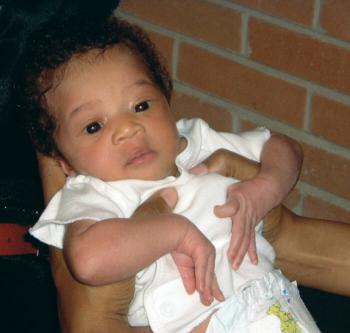There is a new life in the world, a precious little child who joined us this summer. Her name is Zoe, and she is my first child. I love her whole-heartedly, desperately, deeply.
Like a lot of new parents, I’ve spent hours — days really — just looking at her. She’s not talking, or even smiling yet, and so I search her from head to toe for clues about her world.
When she looks up at me or out into the distance, I see a mixture of wonder, trust and anticipation in her eyes, a little bit of awe and a hefty serving of hope. In her gaze, I see an innate belief in goodness. Her name means “life,” and, to me, she is life-affirming.
Our days of staring at one another for hours on end, however, are coming to a close. My spouse and I both return to work this fall, and we are faced with the working parents’ dilemma: What childcare center is right for our child?
We went online and looked at what the experts told us to ask childcare providers: Is your program NAEYC- or NAFDC-accredited? State-licensed? Is the staff trained in CPR and first aid? What’s the student-to-teacher ratio? What’s the discipline policy? What are the rules about who can pick up our child from school?
These questions seemed reasonable, and we asked them. But, for us, the questioning fell short. There was a larger issue looming: If Zoe enrolls in this childcare center, what kind of community is she joining?
We hope Zoe can join a school community that embraces the wondrous spirit of every child, where she and her peers are lifted up, academically and emotionally, and where the tenets of sharing, caring and fair playing are guiding principles.
What Zoe learns about being a member of a community in these early school experiences will shape her expectations of equity and citizenship.
How do we create a harmonious society out of so many kinds of people? They key is tolerance—the one value that is indispensable in creating community.
Barbara Jordan
Classrooms and playgrounds are where our diverse democracy first takes shape, where children first exercise the privileges and responsibilities of sharing space, where they first reach across differences and find common ground.
This issue of Teaching Tolerance celebrates the school community. We include some of the best articles from previous issues of our magazine — stories that are as relevant today as when they were first published — and we offer new strategies, too.
From Columbine High School — a community ripped apart by violence and rebuilt with hope and perseverance — to an alternative school in Cincinnati — where students strive to break down social boundaries around the lunch table — this magazine honors teachers, students, counselors, parents and administrators who have struggled to build healthy, welcoming schools.
Our schools, like our democracy, are works in progress. As the stories here show, when we take on the necessary work of enlarging the spirits of our communities, we must critically examine our school cultures.
And it is in such schools — in places where the creation of a just and caring community is a matter of conscience and action — that I hope my child, and every child, takes root and flourishes.
—Jennifer Holladay
Jennifer Holladay is the interim director of the Southern Poverty Law Center's Tolerance Programs.


0 COMMENTS